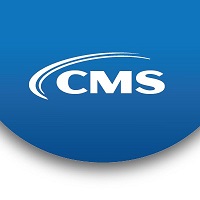 Operating Rules message highlights operating rules for the Electronic Funds Transfer and Electronic Remittance Advice transactions.
Operating Rules message highlights operating rules for the Electronic Funds Transfer and Electronic Remittance Advice transactions.
About the Payment Transactions: Electronic Funds Transfer (EFT) and Electronic Remittance Advice (ERA)
The payment and remittance advice transaction conveys either:
- Payment from a health or dental plan to a provider, with information about the electronic transfer of funds and payment processing, or
- An explanation of benefits—or remittance advice—from a health or dental plan to a provider
An EFT is the electronic message that plans use to order funds to be electronically transferred to a provider’s bank account.
An ERA explains adjustments made to claims based on factors like contractually negotiated pricing.
Operating Rules for the Payment and Remittance Advice Transactions
On August 10, 2012, HHS issued an Interim Final Rule with Comment (CMS-0028-IFC) that adopted the Phase III CORE EFT and ERA operating rules, which included the Master Companion Guide template for the use of X12 Version 5010 transactions. In April 2013, HHS published CMS-0028-IFC as a Final rule, which required covered entities to comply with the EFT and ERA Operating Rule set as of January 1, 2014.
The Phase III operating rules for EFT and ERA transactions includes requirements such as:
- The uniform use of claims adjustment reason codes (CARCs) and remittance advice remark codes (RARCs) to explain payment adjustments or denials to providers. For information about the CAQH CORE Code Combinations maintenance process and how you can get involved, go to the CAQH CORE website and view the CAQH CORE 360 Rule webpage.
- Limitations on the amount of data that health and dental plans can request from providers enrolling in EFT or ERA—and requiring plans to offer electronic enrollment for Electronic Funds Transfer and Electronic Remittance Advice programs (CAQH CORE 380 and 382 Rules)
- Requirement that health and dental plans furnish data that allow providers to readily re-associate EFT and ERA transactions—and the requirements for resolving missing information (Rule 370)
- Specification that plans must base the flow and format of their companion guides on the CAQH CORE Master Companion Guide Template (Rule 350)
The complete set of Phase III EFT and ERA operating rules is available on the CAQH CORE website.
